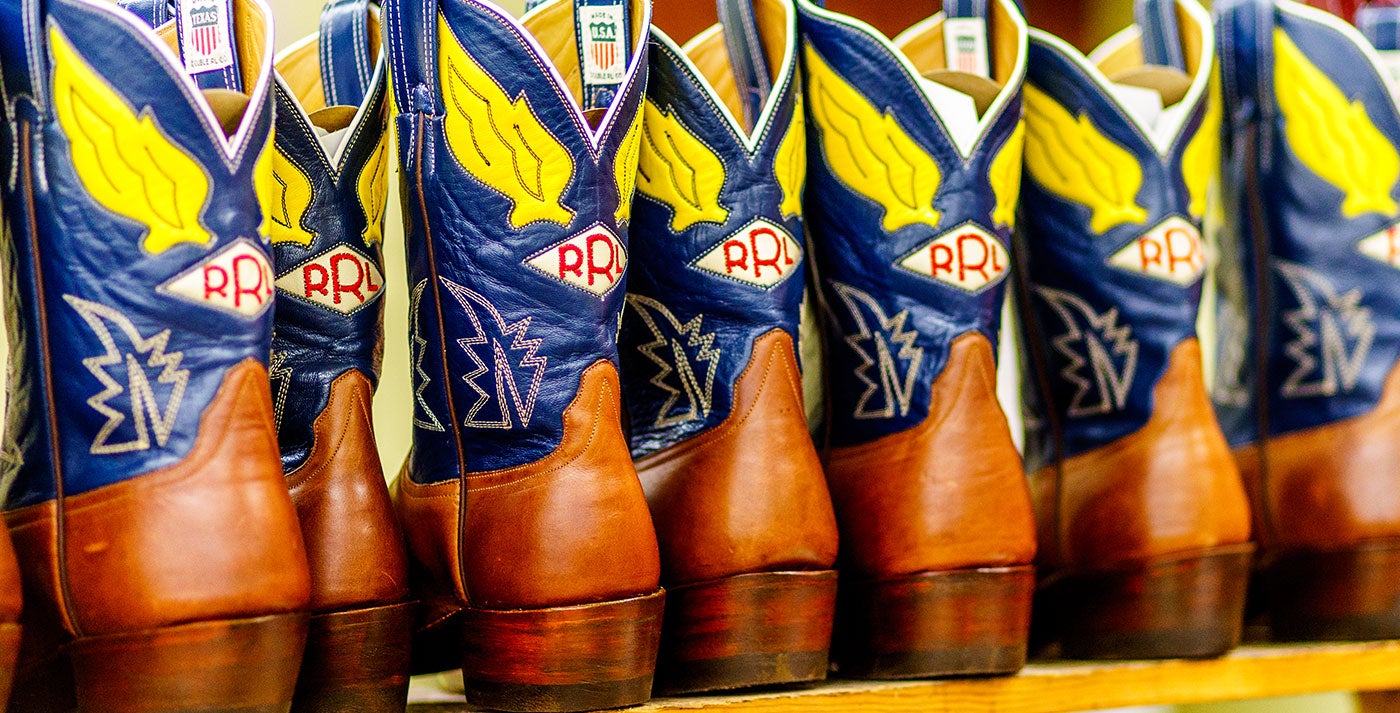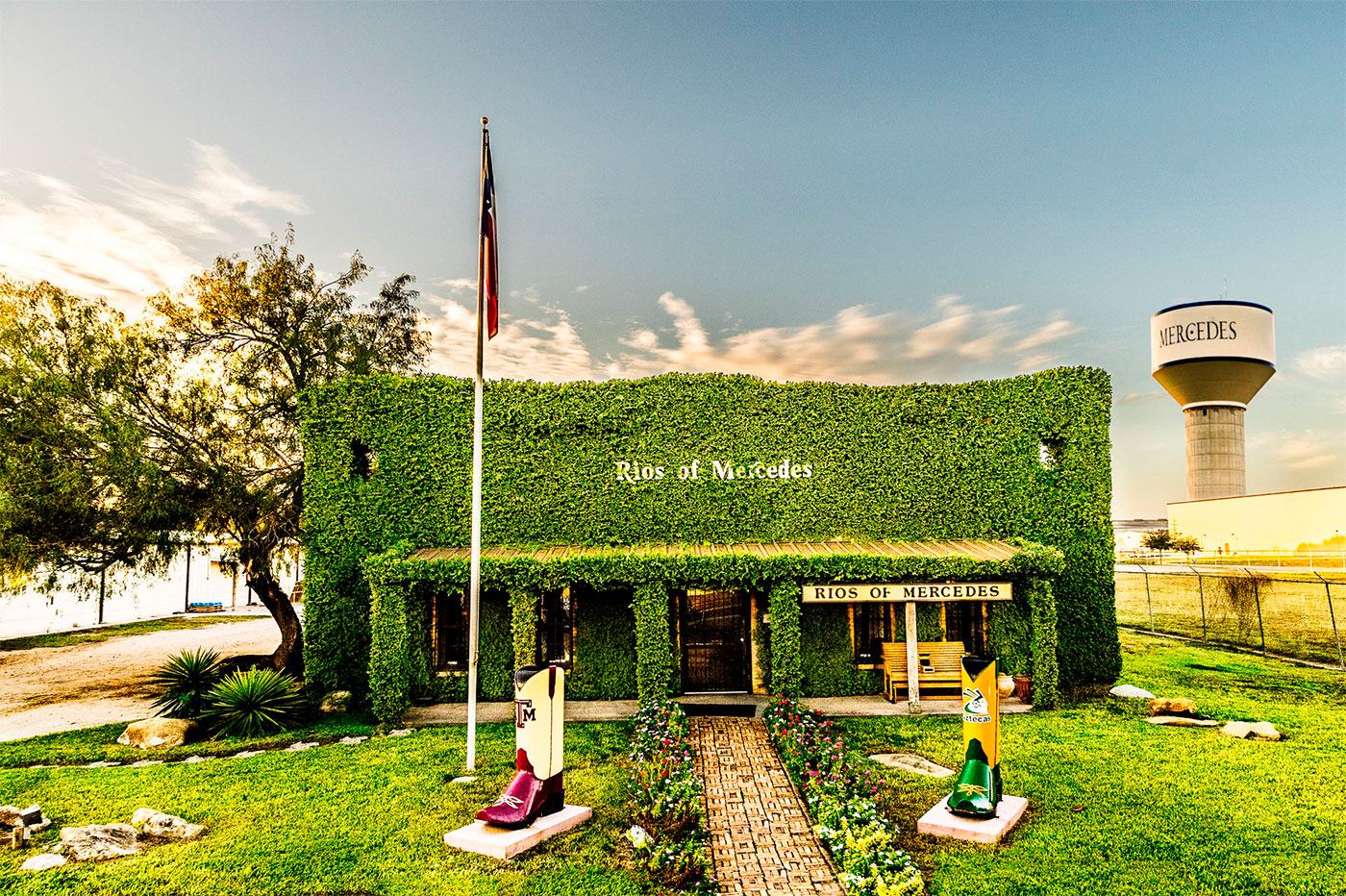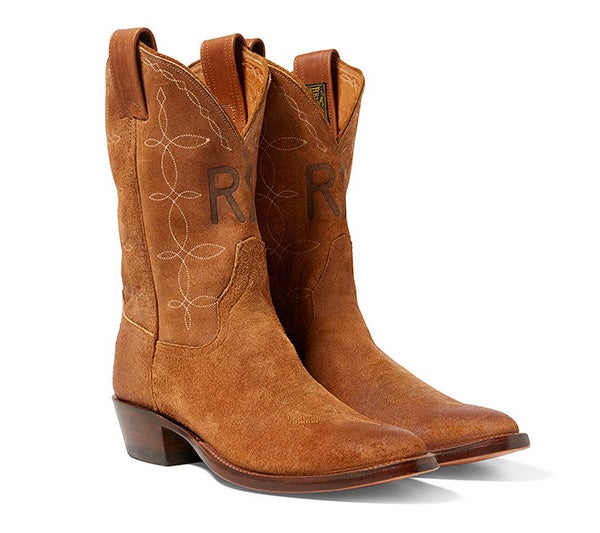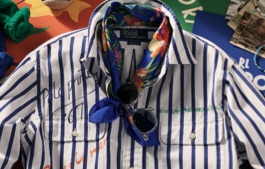
On the Heels of History
To craft Double RL boots, a legendary Texas factory relies on 160 years’ worth of heritageThe year is 1864. The Austrian Archduke Ferdinand Maximilian—a scion of the Hapsburg family and soon to be known as Emperor Maximilian—has just arrived in Mexico, at the behest of France’s Napoleon III. His mission: to rule the country on behalf of the French, who had invaded just three years prior. He has 40,000 French soldiers at his disposal, but he is ultimately doomed. Lacking popular support, he is overtaken by the Mexican resistance and executed in 1867. But while his reign is short-lived, he has an impact that lasts through today: He commissions his cavalry’s boots from the Rios family.
Those bootmakers—now known as Rios of Mercedes—are still operating in the Rio Grande Valley in an ivy-lined workshop where they meticulously craft boots for Double RL. These boots embody a romantic view of cowboys and the American West, but to gain a deeper understanding of what makes them so special, it helps to learn where they’re made, and by whom.
Start by visiting Mercedes, a town of about 15,000 roughly 10 miles from the Mexico border. The landscape is more Southern than stereotypical Texan, dotted by palm trees and cotton fields rather than cattle ranches or oil rigs. Thanks to Rios, and the legion of bootmakers who passed through the company over the past century and a half, Mercedes became known as the bootmaking capital of Texas. As many as a dozen shops operated at one time during the town’s heyday. A public art project, with 5½-foot-tall aluminum boots dispersed throughout the city, commemorates this history.
Today that number has dwindled, with the family-owned Rios among the last standing shops, not just in Texas but in the entire United States. In fact, when another well-known American bootmaker realized it no longer had anyone on staff who knew how to execute a particular kind of boot construction, they came to Rios.
The workshop is intimate, fluorescent-lit, and smells of leather and boot polish. Here, Rios’ 30 or so employees produce just 40 to 50 pairs of boots per day—including those made for Double RL—a testament to the amount of work that goes into each. The process begins with leather from American tanneries—and in the case of the suede New Plainview and the Chelsea Plainview, that means leather from Ralph Lauren’s Double RL Ranch in Colorado—which is chosen for the quality of its sourcing and tanning. Each part of the source animal corresponds to its destination on the boot—for example, a calf’s shoulders are strong and tight, so that leather is used for the welt, which needs to withstand everyday wear. A calf’s skin stretches from top to bottom (rather than from ear to tail); Rios cuts the leather to take advantage of that natural flexibility.
Very broadly speaking, the main portion of a boot is made of three parts: the vamp (the foot), the counter (the heel area), and the top (aka the shaft or the upper). For the top, each piece of leather is cut by hand, then briefly pasted to a premium cowhide lining to hold it in place when it goes to a special stitching room. There, a craftsman uses a third-generation single-head embroidery machine to stitch the decorative inlays. The upper pieces are then sewn together so that the boots sit just right when joined to the vamp and the counter. The act requires extreme precision (it should be noted that the average Rios employee has worked there for 18 years). These three pieces are sewn inside out, so any excess leather can be surgically sliced away and rough patches smoothed out. Finally, the boots are turned right-side out by hand-pulling each individual boot over a stirrup machine, which looks vaguely like a medieval torture device. As an added benefit, this step also tests the durability of the boot itself.
While this is happening, a separate group of craftsmen works on the soles. Each sole is cut at the factory—a rarity—and made with vegetable-tanned leather using a bark-based solution. The soles are attached to the rest of the boot by hand. Another skilled worker inserts a steel shank that’s been manufactured in St. Louis—Rios strives to only use parts that are made in the US—by hammering in pegs to keep the shank in place.
Once the boot is assembled, another team puts each pair through four (noisy) stages of buffing and sanding for the soles. Then, there’s a final stain and polish before they’re finally packaged up. The end result: a boot made with as much care and precision as any piece of footwear you’re likely to own. Without the benefit of laces, a cowboy boot has to fit your foot exactly.
Which reminds us: To tell if your boot fits, check the arch of your foot, as well as the toe. If the arch of the boot and the arch of your foot are misaligned, the boot will stretch, and even the best leather will start to wear prematurely. But if you get the right fit, your boots will last as long as you do. The folks at Rios—and Double RL—have made sure of it.
Shop Double RL Boots >- Photographs by Johnny Martinez; Courtesy of Rios of Mercedes








